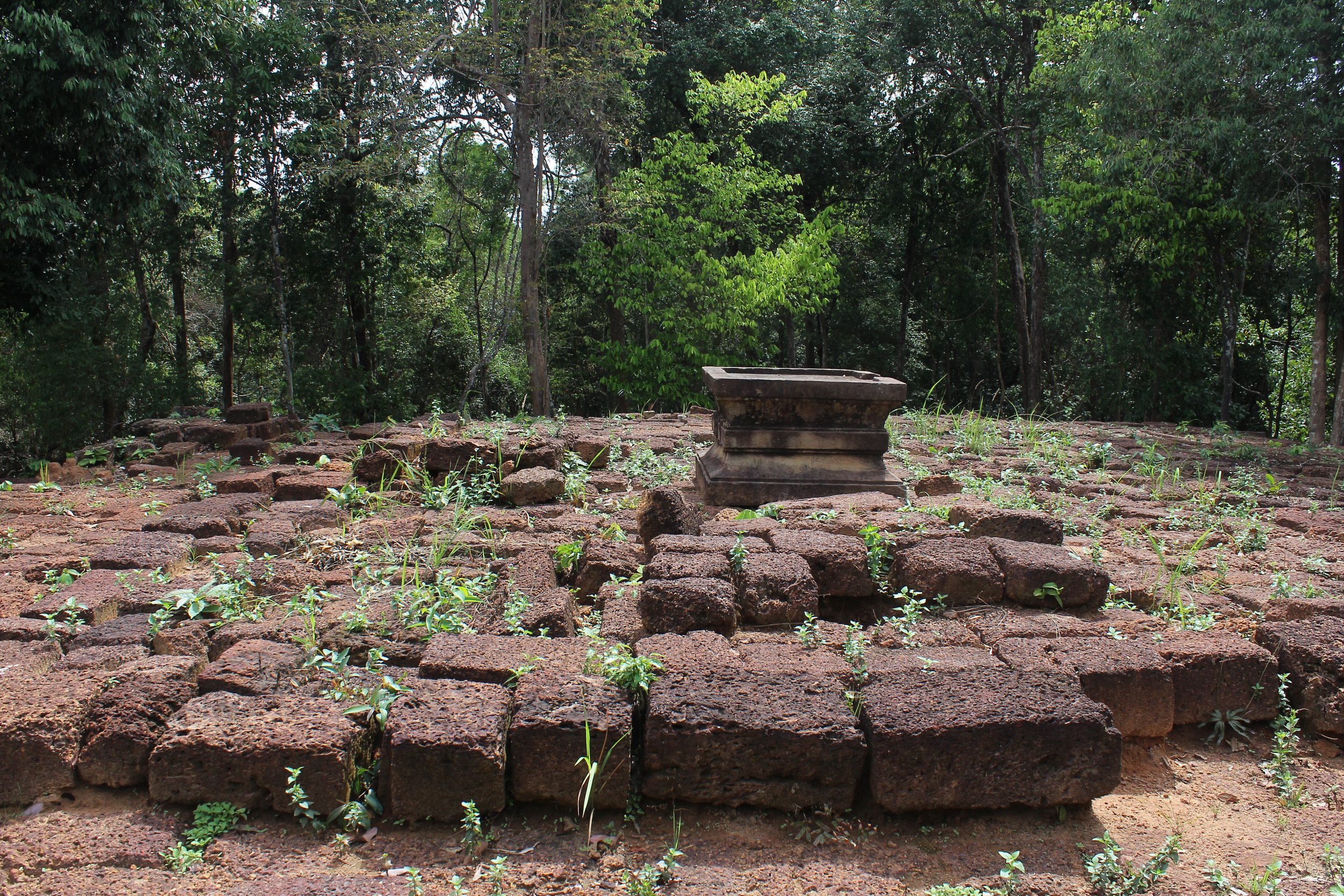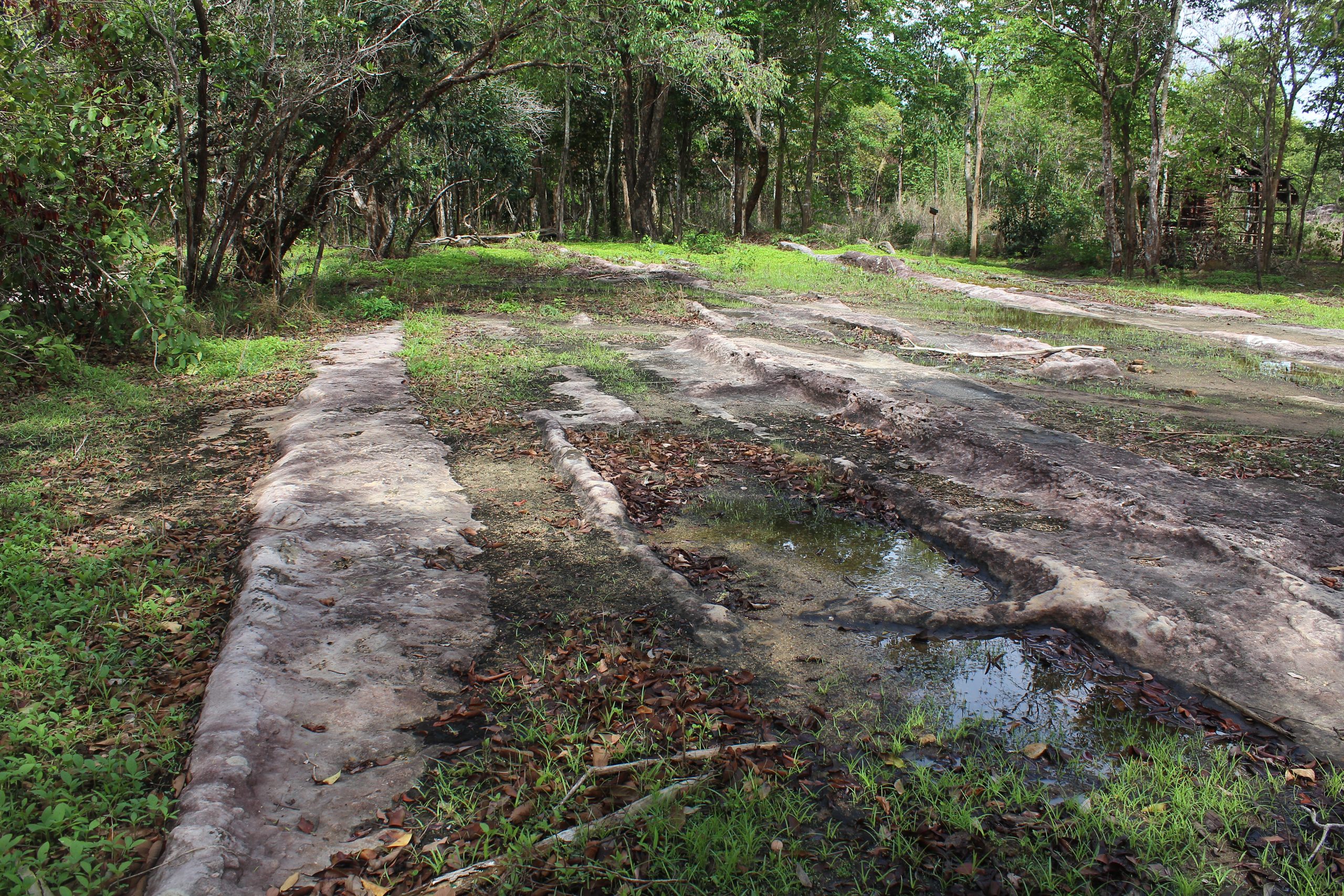Cambodia, Phnom Kulen, Angkor period (ruler: Jayavarman II), 9th century, Sandstone, laterite, and brick
Rising from what seems to be a natural mound is the pyramidal temple, Rong Chen. This is the site believed to be where the coronation ritual (abhishekam) of Jayavarman II, the first Khmer king, was performed. While inscriptions tell us that this king was consecrated on Phnom Kulen, they do not specify the precise location. From the time of Jayavarman II onward, each successive king in the Khmer lineage was permitted to build one temple with a similarly terraced, mountain-like architectural form.

The pyramid’s terraces are built of laterite. At the apex is a sandstone pedestal supporting a linga (symbol of the Hindu god Shiva).

Because Phnom Kulen provided such plentiful natural resources, the sandstone could be hewn very close to the temple itself. Later, when the Khmer capital moved to more distant Angkor, Phnom Kulen maintained its status as the main source of sandstone for temple construction and sculptures of the gods.




